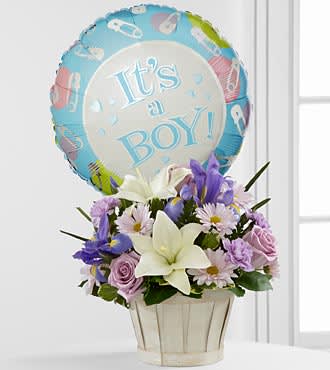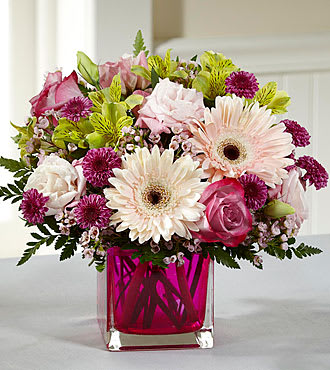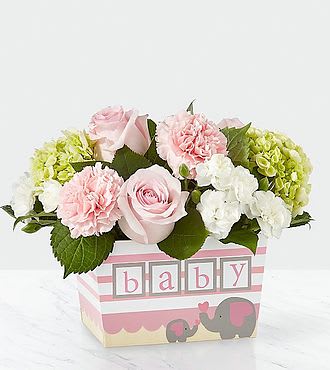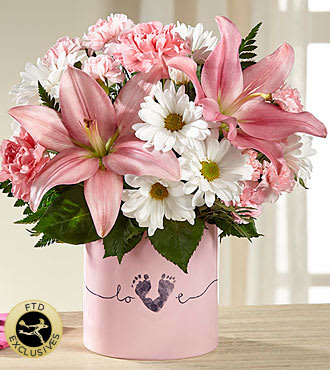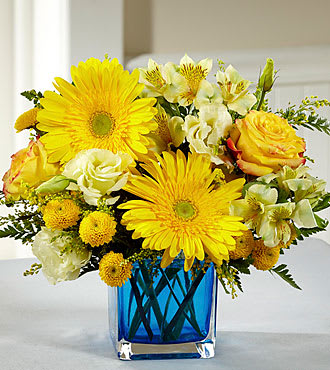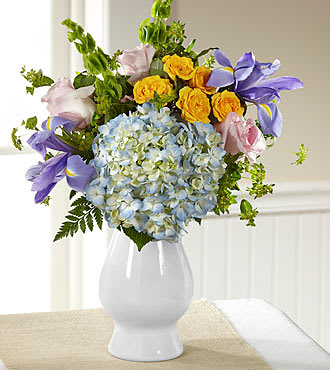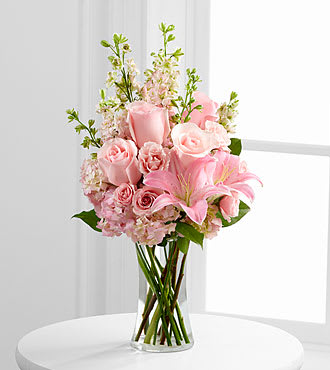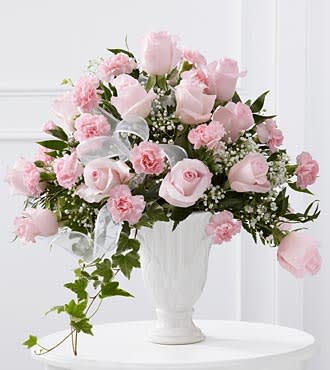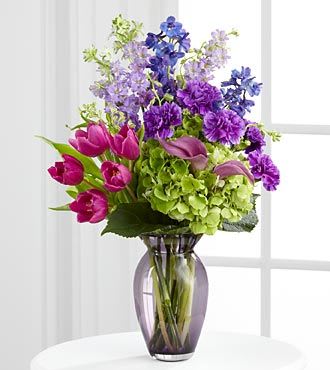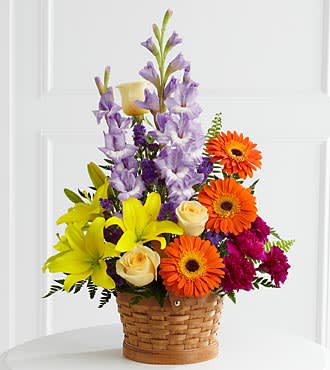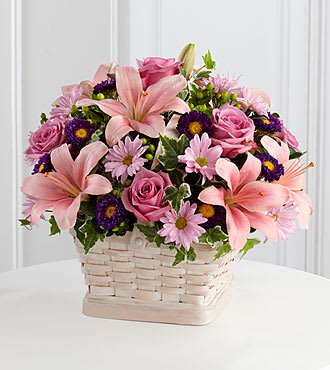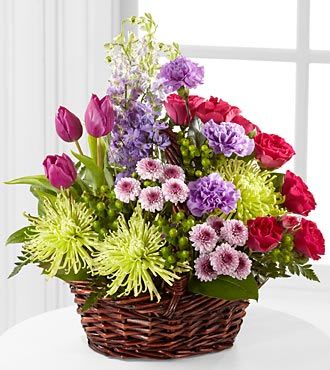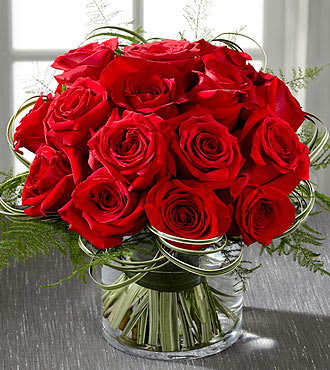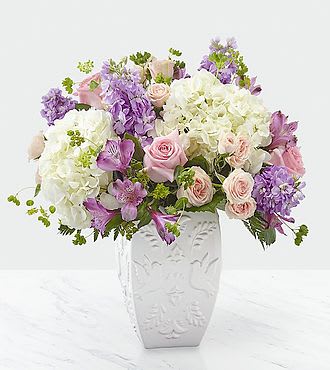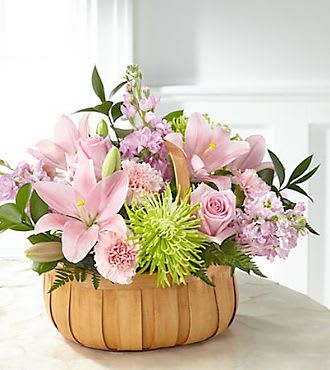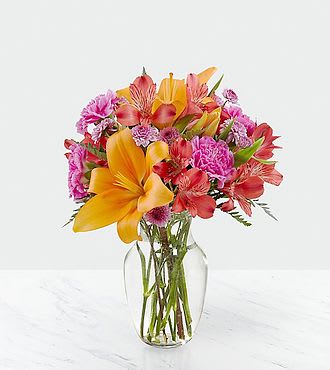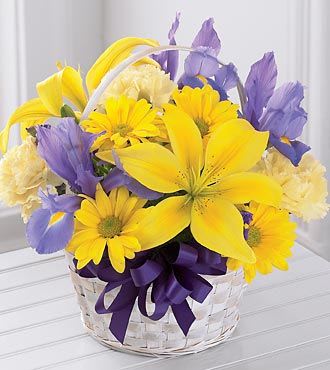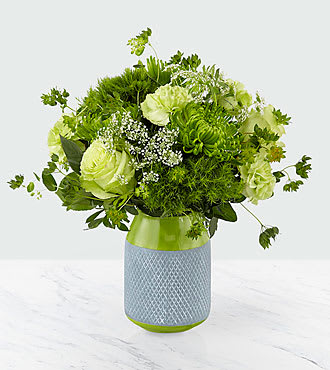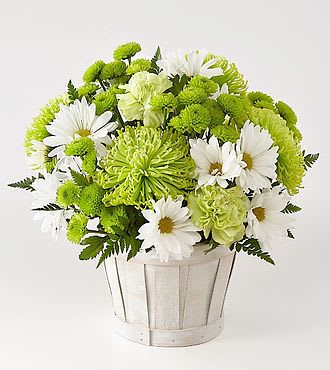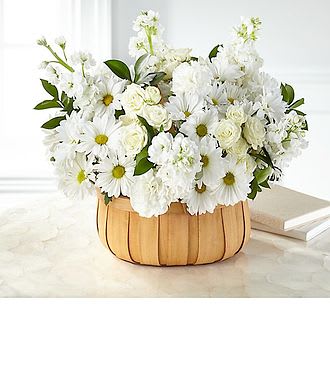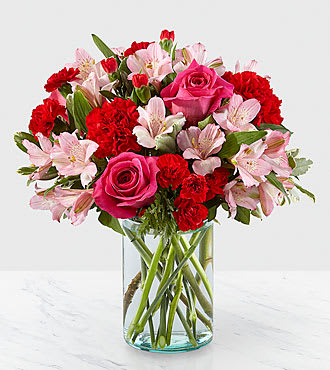- New Baby
- Best Sellers
- Carnations
- $59.90
- $64.90
- $39.90
- $89.90
- $89.90
- $87.90
- $97.90
- $74.90
- $39.90
- $39.90
- $59.90
- $87.90
- $49.90
- $69.90
- $44.90
June 1, 2025
First Mesa June Floral Selection
The Bloom Central flower delivery of the month for June in First Mesa is the Lush Life Rose Bouquet

The Lush Life Rose Bouquet from Bloom Central is a sight to behold. The vibrant colors and exquisite arrangement bring joy to any room. This bouquet features a stunning mix of roses in various shades of hot pink, orange and red, creating a visually striking display that will instantly brighten up any space.
Each rose in this bouquet is carefully selected for its quality and beauty. The petals are velvety soft with a luscious fragrance that fills the air with an enchanting scent. The roses are expertly arranged by skilled florists who have an eye for detail ensuring that each bloom is perfectly positioned.
What sets the Lush Life Rose Bouquet apart is the lushness and fullness. The generous amount of blooms creates a bountiful effect that adds depth and dimension to the arrangement.
The clean lines and classic design make the Lush Life Rose Bouquet versatile enough for any occasion - whether you're celebrating a special milestone or simply want to surprise someone with a heartfelt gesture. This arrangement delivers pure elegance every time.
Not only does this floral arrangement bring beauty into your space but also serves as a symbol of love, passion, and affection - making it perfect as both gift or decor. Whether you choose to place the bouquet on your dining table or give it as a present, you can be confident knowing that whoever receives this masterpiece will feel cherished.
The Lush Life Rose Bouquet from Bloom Central offers not only beautiful flowers but also a delightful experience. The vibrant colors, lushness, and classic simplicity make it an exceptional choice for any occasion or setting. Spread love and joy with this stunning bouquet - it's bound to leave a lasting impression!
First Mesa Florist
Looking for flower delivery?
Bloom Central is your ideal choice for First Mesa flowers, balloons and plants. We carry a wide variety of floral bouquets (nearly 100 in fact) that all radiate with freshness and colorful flair. Or perhaps you are interested in the delivery of a classic ... a dozen roses! Most people know that red roses symbolize love and romance, but are not as aware of what other rose colors mean. Pink roses are a traditional symbol of happiness and admiration while yellow roses covey a feeling of friendship of happiness. Purity and innocence are represented in white roses and the closely colored cream roses show thoughtfulness and charm. Last, but not least, orange roses can express energy, enthusiasm and desire.
Whatever choice you make, rest assured that your flower delivery to First Mesa Arizona will be handle with utmost care and professionalism.
Spotlight on Scabiosa Pods
Scabiosa Pods don’t just dry ... they transform. What begins as a modest, pincushion flower evolves into an architectural marvel—a skeletal orb of intricate seed vessels that looks less like a plant and more like a lunar module designed by Art Nouveau engineers. These aren’t remnants. They’re reinventions. Other floral elements fade. Scabiosa Pods ascend.
Consider the geometry of them. Each pod is a masterclass in structural integrity, a radial array of seed chambers so precisely arranged they could be blueprints for some alien cathedral. The texture defies logic—brittle yet resilient, delicate yet indestructible. Run a finger across the surface, and it whispers under your touch like a fossilized beehive. Pair them with fresh peonies, and the peonies’ lushness becomes fleeting, suddenly mortal against the pods’ permanence. Pair them with eucalyptus, and the arrangement becomes a dialogue between the ephemeral and the eternal.
Color is their slow revelation. Fresh, they might blush lavender or powder blue, but dried, they transcend into complex neutrals—taupe with undertones of mauve, parchment with whispers of graphite. These aren’t mere browns. They’re the entire history of a bloom condensed into patina. Place them against white hydrangeas, and the hydrangeas brighten into luminosity. Contrast them with black calla lilies, and the pairing becomes a chiaroscuro study in negative space.
They’re temporal shape-shifters. In summer arrangements, they’re the quirky supporting act. By winter, they’re the headliners—starring in wreaths and centerpieces long after other blooms have surrendered to compost. Their evolution isn’t decay ... it’s promotion. A single stem in a bud vase isn’t a dried flower. It’s a monument to persistence.
Texture is their secret weapon. Those seed pods—dense at the center, radiating outward like exploded star charts—catch light and shadow with the precision of microchip circuitry. They don’t reflect so much as redistribute illumination, turning nearby flowers into accidental spotlights. The stems, brittle yet graceful, arc with the confidence of calligraphy strokes.
Scent is irrelevant. Scabiosa Pods reject olfactory nostalgia. They’re here for your eyes, your sense of touch, your Instagram’s minimalist aspirations. Let roses handle perfume. These pods deal in visual haikus.
Symbolism clings to them like dust. Victorian emblems of delicate love ... modern shorthand for "I appreciate texture" ... the floral designer’s secret weapon for adding "organic" to "modern." None of this matters when you’re holding a pod up to the light, marveling at how something so light can feel so dense with meaning.
When incorporated into arrangements, they don’t blend ... they mediate. Toss them into a wildflower bouquet, and they bring order. Add them to a sleek modern composition, and they inject warmth. Float a few in a shallow bowl, and they become a still life that evolves with the daylight.
You could default to preserved roses, to bleached cotton stems, to the usual dried suspects. But why? Scabiosa Pods refuse to be predictable. They’re the quiet guests who leave the deepest impression, the supporting actors who steal every scene. An arrangement with them isn’t decoration ... it’s a timeline. Proof that sometimes, the most extraordinary beauty isn’t in the blooming ... but in what remains.
More About First Mesa
Are looking for a First Mesa florist because you are not local to the area? If so, here is a brief travelogue of what First Mesa has to offer. Who knows, perhaps you'll be intrigued enough to come visit soon, partake in some of the fun activities First Mesa has to offer and deliver flowers to your loved one in person!
First Mesa rises from the Arizona desert like a sandstone altar, its edges sharp against the endless blue. To stand atop it is to hover between realms: below, the scrubby expanse stretches toward the horizon in gradients of ochre and dust; above, the sky yawns, indifferent. The Hopi people have lived here for centuries, their villages, Walpi, Sichomovi, Tewa, clinging to the mesa’s spine like beads on a string. The air hums with the weight of centuries, a quiet insistence that this place is not just land but a living manuscript, its stories etched into the earth and whispered in the wind that scrapes across the rocks.
Visitors climb a narrow path to Walpi, guided by locals whose voices carry the soft cadence of Hopi. The village seems to grow from the stone itself, its terraced houses huddled close, their walls warm under the sun. Children dart between doorways, laughter echoing off ancient walls. Elders sit on low benches, hands busy with bundles of sumac or spools of sinew, weaving baskets that hold both practicality and prayer. Every gesture here feels deliberate, a thread in a tapestry older than memory. The Hopi speak of koyaanisqatsi, a life out of balance. But here, time moves differently. It loops. It spirals. A man planting corn in a terraced garden uses the same wooden tool his ancestors did, the same motions to coax life from arid soil. The corn’s roots grip the earth like fists.

Same day service available. Order your First Mesa floral delivery and surprise someone today!
Artisans in dimly lit rooms shape clay into pots, their fingers tracing curves that mirror the mesas. The clay remembers. It remembers the hands that dug it from the earth, the songs sung as it was mixed with ash, the coils pinched into vessels that will hold water, meal, history. Each pot is fired in a pit, flames licking blackness into the orange clay until it gleams like a night sky. These are not commodities but companions, objects that insist on their own dignity. Down in the plaza, dancers emerge at dawn during ceremonies, their bodies painted, their feet stirring the dust into clouds. Masks carved from cottonwood root transform them into spirits, rainbringers, messengers, guardians. The rhythms of drums sync with heartbeats. You don’t watch so much as witness.
The mesa’s edge offers a view of the desert below, where shadows pool in the valleys and the light turns the sandstone into gold. A woman points to a cluster of rocks shaped like a crouching lion. “That’s where the kachinas live,” she says, smiling in a way that suggests she knows more than she’ll say. The Hopi world is layered, stories nesting within stories. A petroglyph of a spiral might chart a migration route or a cosmic cycle. A handprint on a canyon wall could be a signature or a sermon.
In the afternoon, the smell of piki bread drifts from doorways. The blue corn batter sizzles on a hot stone, spread thin as parchment. It’s crisp, delicate, a taste that dissolves into sweetness. Families gather on rooftops to shell beans or braid rope, their conversations weaving between Hopi and English. A teenager checks her phone, then leans over to ask her grandmother a question in the old language. The connection doesn’t falter.
By dusk, the light softens, bathing the mesa in amber. A group of men return from a hunt, their footsteps quiet. They carry a deer slung between poles, its body wrapped in a blanket. There’s reverence in their movements, a gratitude that transcends language. Later, under stars impossibly bright, the village settles. The wind carries the scent of sage and juniper. Somewhere, a flute plays. The notes are low, mournful, but not sad, a sound that acknowledges the darkness without fearing it.
First Mesa doesn’t offer answers. It asks questions. What does it mean to belong to a place? To honor it? To persist? The Hopi word for “people” is Hopitu, which translates, roughly, to “those who live correctly.” Correctly, here, isn’t about morality but harmony, a covenant with the land, the ancestors, the future. The mesa endures because it is humble, because it bends but does not break. It is a compass. A mirror. A lesson in how to hold on without clutching.






